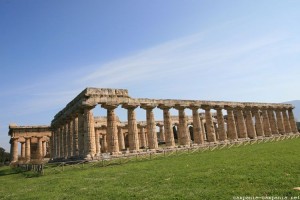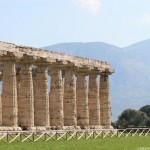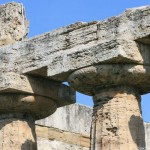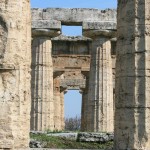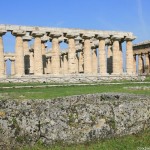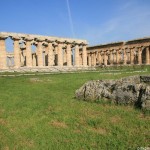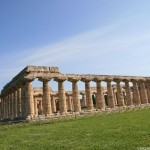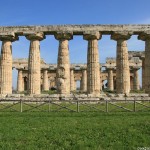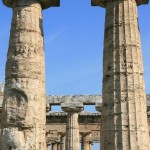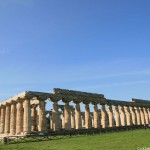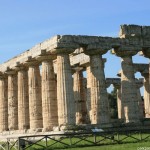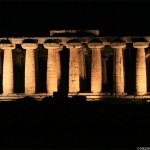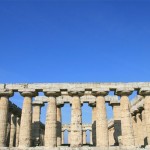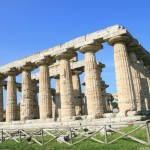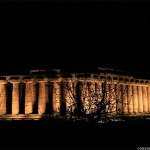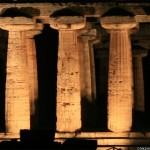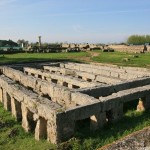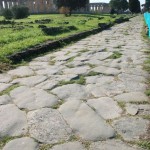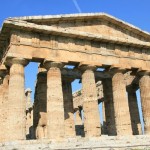It is the oldest of the three Doric temples, dating from the third quarter of the sixth century BC.
It was improperly called “basilica” since the eighteenth century, because both the lack of pediments, the odd number of columns on the short sides, made it considered as a Roman basilica.
It is on the basis of ex-voto and inscriptions found nearby, that Hera was recognized as tutelary deity of the temple.
Its peripteral carries 9 by 18 columns, on a platform of 25 by 55 meters.
The cell (naos), preceded by a portico (pronaos) with three columns between the openings, was divided into two naves by a central colonnade. At the back of the cell, the Adyton was a sacred compartment, closed and inaccessible.
Stratigraphic studies have established that the cell was previously divided into two rooms, amphiprostyle type, with colonnade on each facade.
The columns are tapered, thinner at the top than at the base, noticeably swollen towards the middle of the height. The capitals have a necklace of leaves in the lower part connecting it to the column, and some on the west side also have a band of palmettes and lotus flowers.
The architrave is preserved on the whole perimeter, with also some blocks which carried the frieze, itself disappeared.
The rites were practiced, as usual, on the great altar on the eastern side.
- Temples grecs de Paestum
- Basilique, temple d’Héra
- Basilique, temple d’Héra
- Basilique, temple d’Héra
- Basilique, temple d’Héra
- Temple d’Héra, basilique
- Basilique, temple d’Héra
- Basilique, temple d’Héra
- Basilique, temple d’Héra
- Basilique, temple d’Héra
- Basilique, temple d’Héra
- Temple d’Héra, basilique
- Temple d’Héra, basilique
- Temple d’Héra, basilique
- Basilique, temple d’Hera
- Basilique, temple d’Héra
loading map - please wait...


